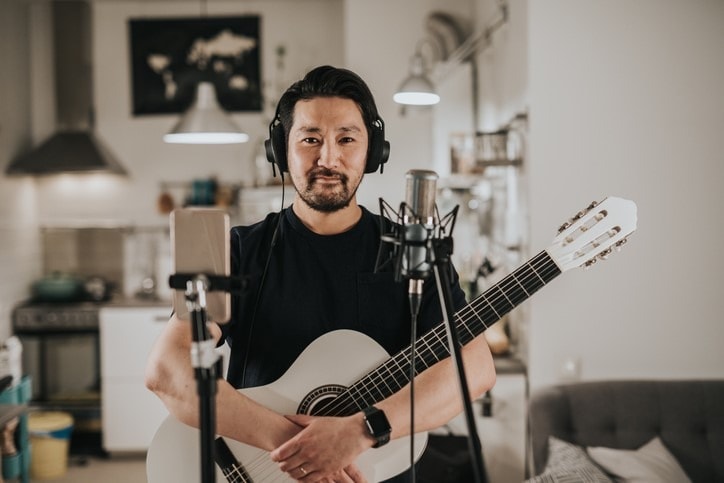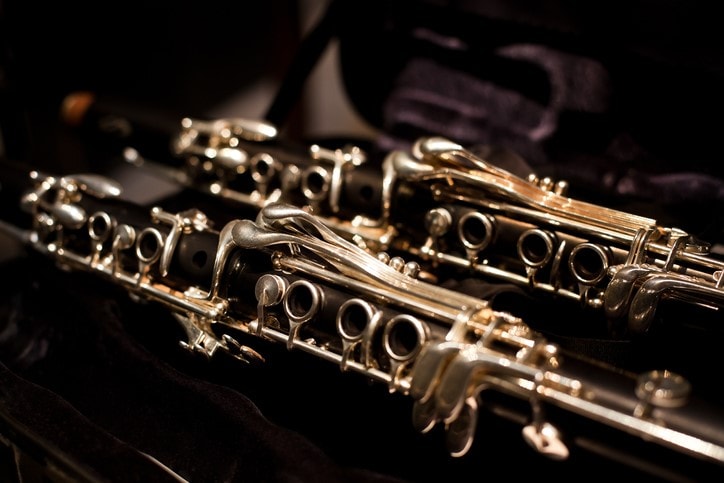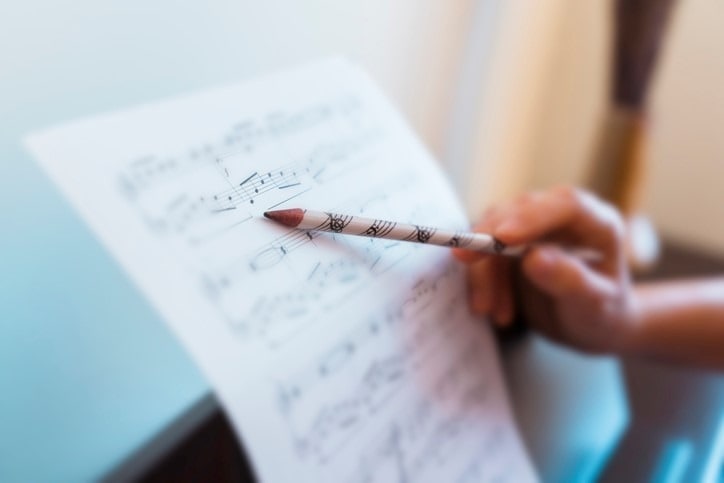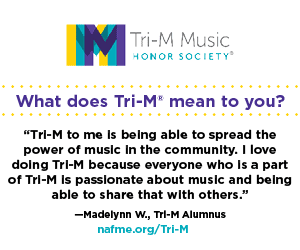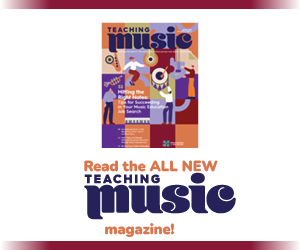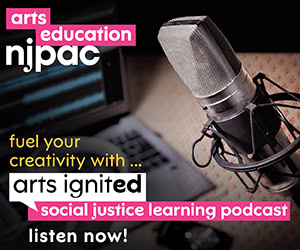/ News Posts / Teaching Private Lessons to Middle School and High School Students
Teaching Private Lessons to Middle School and High School Students
By NAfME Member Colleen Conway
Content drawn from Private Music Lessons: A Manual for Teachers (Conway 2019) Chapter One. Conway presented on “School and Community Collaborations: The Private Lesson” during the NAfME 2021 PreK–12 Learning Collaborative in February 2021.
If you are a performing musician and are looking to begin a private studio, there are some things to understand about that work. This post outlines some of the most common misconceptions of private teachers.
Instructor Identity
If one thinks of themselves as a “trumpet teacher” or a “teacher of voice,” I consider that a common misconception of a private teacher. One needs to identify as a teacher of children, through music, using the trumpet (or voice, or piano, etc.) as the medium. Most of us have extended knowledge of the teaching of our instrument or voice and thus tend to focus instruction on those things we know. Private teachers need to understand the developmental characteristics of children at various ages, stages, and levels of experience. Although some of our private students will continue on to be musicians, the majority of them will not. It is important for the private instructor to view being a powerful adult role model and professional mentor to the student as one of the primary goals of private music instruction.
Rote Versus Note Learning
I talk with many private teachers who insist that they want to avoid teaching by rote. They know there is more to teaching than simply “playing or singing it for students,” and so they sometimes avoid providing a model in the effort to teach students to “read.” Some teachers even avoid having students listen to professional recordings for fear that students will only imitate others. Rote instruction is a pre-cursor to solid musical understanding such that a student should have the opportunity to listen to musical concepts and sing or play without notation within these concepts before notation is introduced. Rote learning is a key step in the music learning process.
Movement, Foot Tapping, and Beat Competence
I find that many private teachers have a misconception that simply encouraging students to tap a foot “to the beat” will lead to beat competency. Students need to be instructed in a variety of movement activities using flowing movements, weighted movements, movements through space, and movement in time in order to bring that rhythmic sense to their singing or playing.
Rhythm Notation and Time Signatures
It is important for private teachers to think mindfully about their pedagogy of counting and rhythm notation. Too often I find that private teachers pass along whatever counting system was taught to them (whether it worked or was logical or not). Or, they assume the student is learning a system in a school music program so they do not address counting and understanding rhythm notation in private lessons.
Being aware of providing rhythm instruction that will “stand the test of time” is important. For example, if we teach that in 4/4 time the top four means that there are four beats in the measure and the bottom four means that the quarter note gets the beat, that works fine for 4/4 time. However, when students get to 6/8 time the rules no longer “stand the test of time.” Choosing counting and syllable systems that help students understand beat function and style is important for the private instructor.
Tonal Notation, Scales, Tonality, and Key Signatures
Similar to the rhythm notation suggestions teachers need to have clear pedagogical clarity regarding how tonal notation, scales, and key signatures are addressed. I hear private teachers expressing concern that students do not always “know their notes.” I encourage teachers to have students sing all notation before playing so they learn to develop their aural skills so as to audiate (bring musical meaning to the notation). Audiation is a musical skill beyond knowing note names and fingers and de-coding the tonal notation.
Practicing
The old adage that “practice makes perfect” is often a misconception of private teachers. Private teachers must have multiple strategies for teaching students of various ages how to practice mindfully and carefully. Students will not practice well if they are not given specific strategies in private lessons and provided with documentation of these assignments and recommendations.
Performance
Many private teachers mis-judge the time it takes to assist students in preparing for performances. For example, a professional musician may be able to have one or two rehearsals with a pianist right before a performance, but a younger student needs much more time to learn to work with an accompanist. Private teachers also forget that young students need to be instructed regarding all aspects of performance including: (a) sleep and nutrition in preparation; (b) what to wear; (c) how to introduce the piece/program; (d) interacting with adjudicators or audience members; (e) bowing and more. Inexperienced students need many opportunities to “practice performing.”
More information regarding ways to focus on musicianship in the teaching of private lessons is available in:
Conway, C.M. (2019). Private music lessons: A manual for teachers.
About the author:
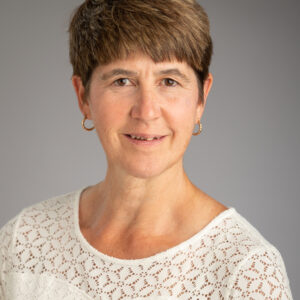
NAfME member Colleen Conway is a professor of music education. She holds bachelor’s and master’s degrees in horn performance and music education from the Eastman School of Music and a doctorate in music education from Teachers College, Columbia University.
Conway’s scholarly interests include instrumental music education, preservice music teacher education, qualitative research, professional development for the in-service music teacher, and the mentoring and induction of beginning music teachers. She has presented at national and international conferences and has published more than 100 articles on these topics in all of the major music education journals.
Conway is currently editor-in-chief of Arts Education Policy Review and on the senior editorial board at Oxford University Press. Books in print include: Great Beginning for Music Teachers: A Guide to Mentoring and Induction (2003, Rowman & Littlefield); Handbook for the Beginning Music Teacher (2006, GIA); Teaching Music in Higher Education (2009, 2020 Oxford); Handbook for the Music Mentor (2010, GIA); Handbook of Qualitative Research in American Music Education (2014, 2020 Oxford); Curriculum and Assessment in Music Education (2015, GIA). The Oxford Handbook on Preservice Music Teacher Education in the United States (2019), Oxford) and Private Music Lessons: A Manual for Teachers (2019, Conway Publications).
Did this blog spur new ideas for your music program? Share them on Amplify! Interested in reprinting this article? Please review the reprint guidelines.
The National Association for Music Education (NAfME) provides a number of forums for the sharing of information and opinion, including blogs and postings on our website, articles and columns in our magazines and journals, and postings to our Amplify member portal. Unless specifically noted, the views expressed in these media do not necessarily represent the policy or views of the Association, its officers, or its employees.
May 18, 2021. © National Association for Music Education (NAfME.org)
Published Date
May 18, 2021
Category
- Music Education Profession
- Music Educator Workforce
- Professional Development
Copyright
May 18, 2021. © National Association for Music Education (NAfME.org)
